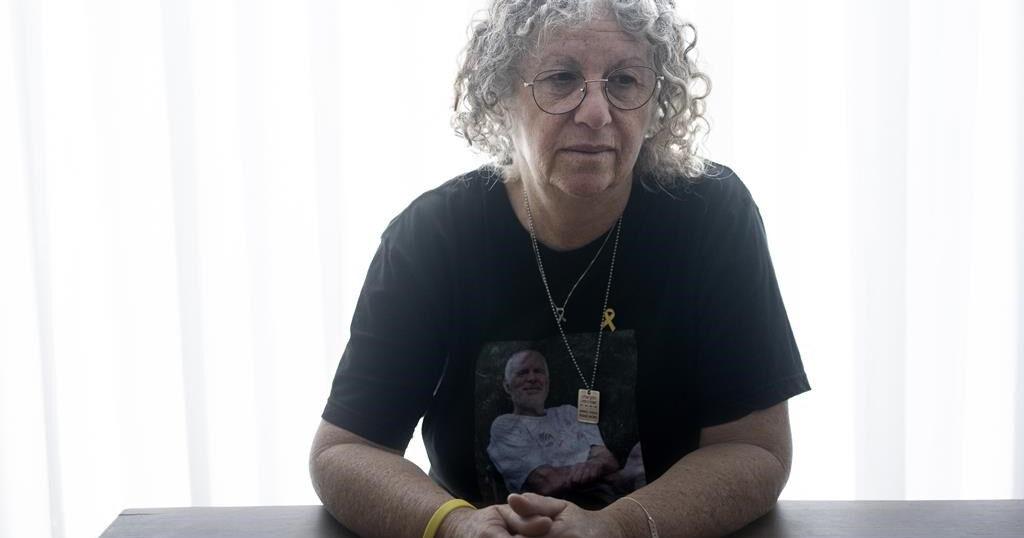WASHINGTON (AP) — Republicans are pointing to newly released immigration enforcement data to bolster their argument that the Biden administration is letting migrants who have committed serious crimes go free in the U.S. But the numbers have been misconstrued without key context.
Immigration and Customs Enforcement released data to Republican Rep. Tony Gonzales in response to a request he made for information about people under ICE supervision either convicted of crimes or facing criminal charges. Gonzales’ Texas district includes an 800-mile stretch bordering Mexico.
Gonzales posted the numbers online and they immediately became a flashpoint in the presidential campaign between former President Donald Trump, who has vowed to carry out mass deportations, and Vice President Kamala Harris. Immigration — and the Biden administration’s record on border security — has become a key issue in the election.
Here’s a look at the data and what it does or doesn’t show:
What are the numbers?
As of July 21, ICE said 662,556 people under its supervision were either convicted of crimes or face criminal charges. Nearly 15,000 were in its custody, but the vast majority — 647,572 — were not.
Included in the figures of people not detained by ICE were people found guilty of very serious crimes: 13,099 for homicide, 15,811 for sexual assault, 13,423 for weapons offenses and 2,663 for stolen vehicles. The single biggest category was for traffic-related offenses at 77,074, followed by assault at 62,231 and dangerous drugs at 56,533.
The Department of Homeland Security, which oversees ICE, later clarified that the numbers span decades — including the Trump administration and other presidencies — and that those not in its custody may be detained by a state or local agency. It’s a distinction ICE didn’t make in its report to Gonzales.
“When we speak of somebody who is not detained, we mean not detained in ICE custody. The individual could be in Folsom State Prison, for example,” Homeland Security Secretary Alejandro Mayorkas said Monday.
Millions of people are on ICE’s “non-detained docket,” or people under the agency’s supervision who aren’t in its custody. Many are awaiting outcomes of their cases in immigration court, including some wearing monitoring devices. Others have been released after completing their prison sentences because their countries won’t take them back.
What do both sides say about the numbers?
Republicans pointed to the data as proof that the Biden administration is letting immigrants with criminal records into the country and isn’t doing enough to kick out those who commit crimes while they’re here.
“The truth is clear — illegal immigrants with a criminal record are coming into our country. The data released by ICE is beyond disturbing, and it should be a wake-up call for the Biden-Harris administration and cities across the country that hide behind sanctuary policies,” Gonzales said in a news release, referring to pledges by local officials to limit their cooperation with federal immigration authorities.
Trump, who has repeatedly portrayed immigrants as bringing lawlessness and crime to America, tweeted multiple screenshots of the data with the words: “13,000 CROSSED THE BORDER WITH MURDER CONVICTIONS.”
He also asserted that the numbers correspond to Biden and Harris’ time in office.
The data was being misinterpreted, Homeland Security said in a statement Sunday.
“The data goes back decades; it includes individuals who entered the country over the past 40 years or more, the vast majority of whose custody determination was made long before this Administration,” the agency said. “It also includes many who are under the jurisdiction or currently incarcerated by federal, state or local law enforcement partners.”
Mayorkas said it was “unfortunate” the information didn’t come with proper explanation, saying that “lends itself to misinterpretation, either deliberate or otherwise.”
The department also stressed what it has done to deport those without the right to stay in America, saying it had removed or returned more than 700,000 people in the past year, which it said was the highest number since 2010. Homeland Security said it had removed 180,000 people with criminal convictions since President Joe Biden took office.
What’s behind the figures?
The data isn’t only listing people who entered the country during the Biden administration but includes people going back decades who came during previous administrations, said Doris Meissner, former commissioner of the Immigration and Naturalization Service, which was the predecessor to ICE.
They’re accused or convicted of committing crimes in America as opposed to committing crimes in other countries and then entering the U.S., said Meissner, who is now director of the U.S. Immigration Policy Program at the Migration Policy Institute.
“This is not something that is a function of what the Biden administration did,” she said. “Certainly, this includes the Biden years, but this is an accumulation of many years, and certainly going back to at least 2010, 2011, 2012.”
A 2017 report by Homeland Security’s Office of Inspector General says that as of August 2016, ICE had about 368,574 people on its non-detained docket who were convicted criminals. By June 2021, shortly after Trump left office, that number was up to 405,786.
Can’t ICE just deport criminals?
ICE has limited resources. The number of people it supervises has skyrocketed, while its staffing has not. As the agency noted in a 2023 end-of-year report, it often has to send staff to help at the border, taking them away from their normal duties.
The number of people ICE supervises but who aren’t in its custody has grown from 3.3 million a little before Biden took office to a little over 7 million last spring.
“The simple answer is that as a system, we haven’t devoted enough resources to the parts of the government that deal with monitoring and ultimately removing people who are deportable,” Meissner said.
ICE also has logistical and legal limits on who they can hold. Its budget allows the agency to hold 41,500 people at a time. John Sandweg, who was acting ICE director from 2013 to 2014 under then-President Barack Obama, said holding people accused or convicted of the most serious crimes is always the top priority.
But once someone has a final order of removal — meaning a court has found that they don’t have the right to stay in the country — they cannot be held in detention forever while ICE works out how to get them home. A 2001 Supreme Court ruling essentially prevented ICE from holding those people for more than six months if there is no reasonable chance to expect they can be sent back.
Not every country is willing to take back their citizens, Sandweg said.
He said he suspects that a large number of those convicted of homicide but not held by ICE are people who were ordered deported but the agency can’t remove them because their home country won’t take them back.
“It’s a very common scenario. Even amongst the countries that take people back, they can be very selective about who they take back,” he said.
The U.S. also could run into problems deporting people to countries with which it has tepid relations.
Homeland Security did not respond to questions about how many countries won’t take back their citizens. The 2017 watchdog report put the number at 23 countries, plus an additional 62 that were cooperative but where there were delays getting things like passports or travel documents.























